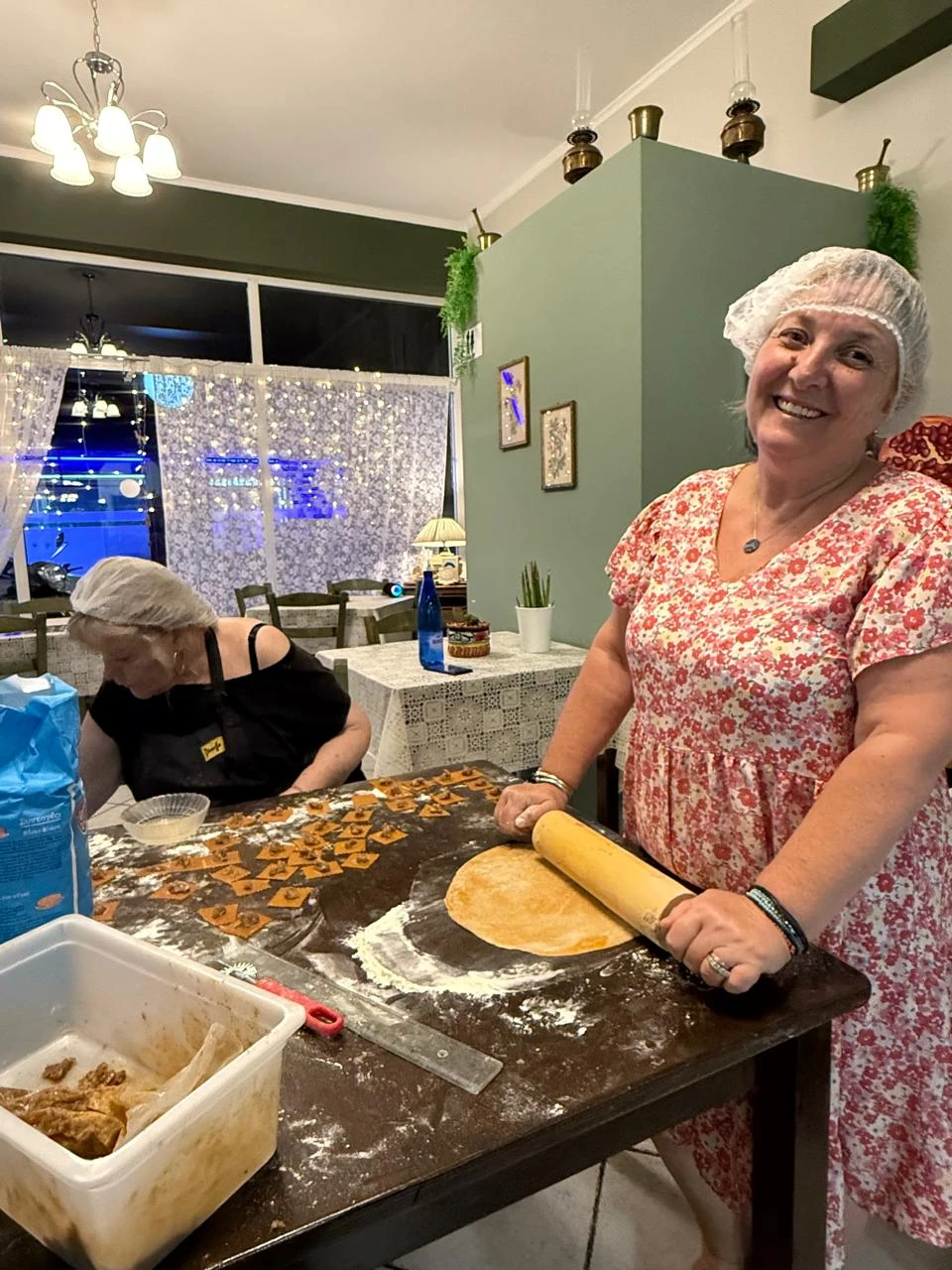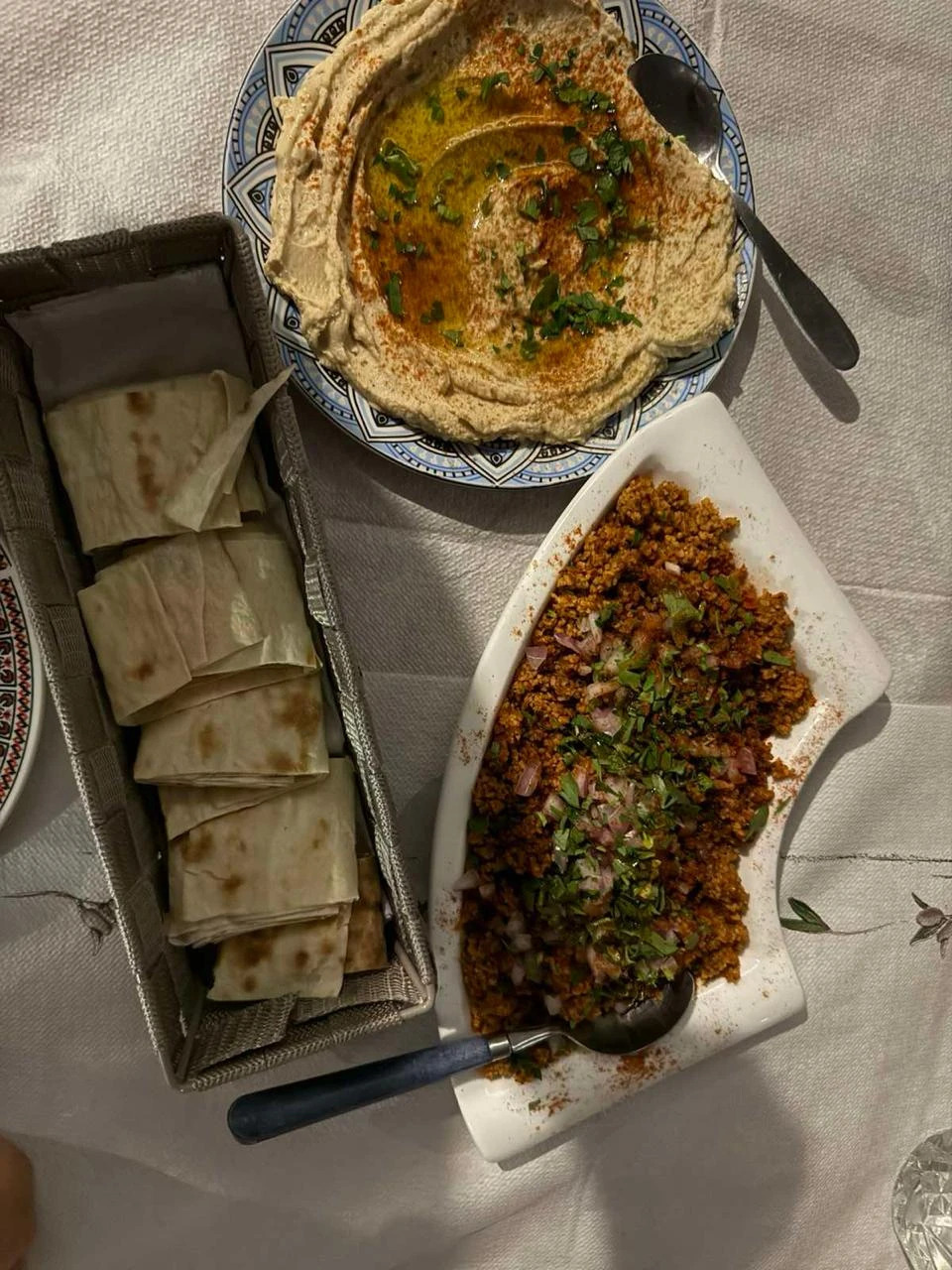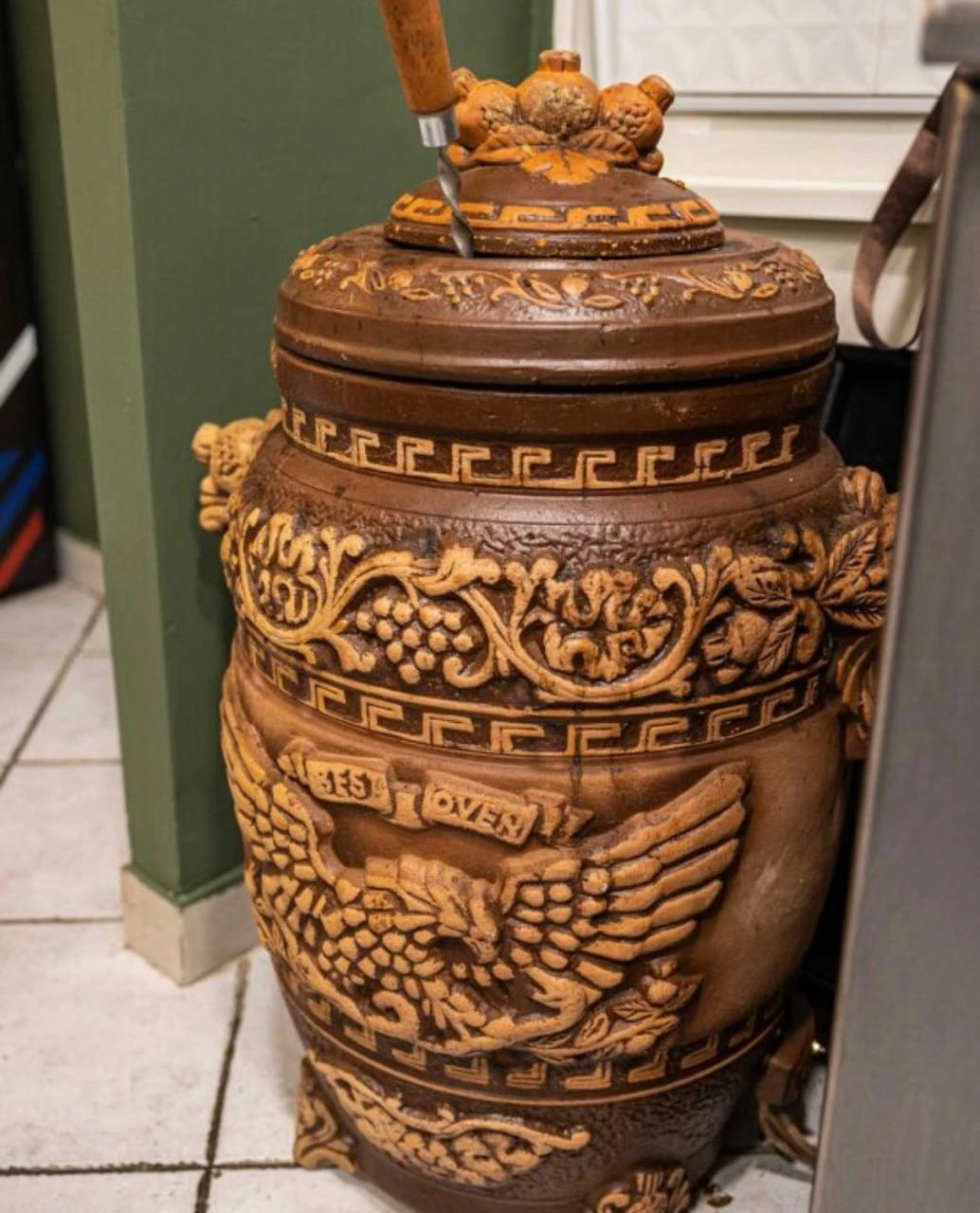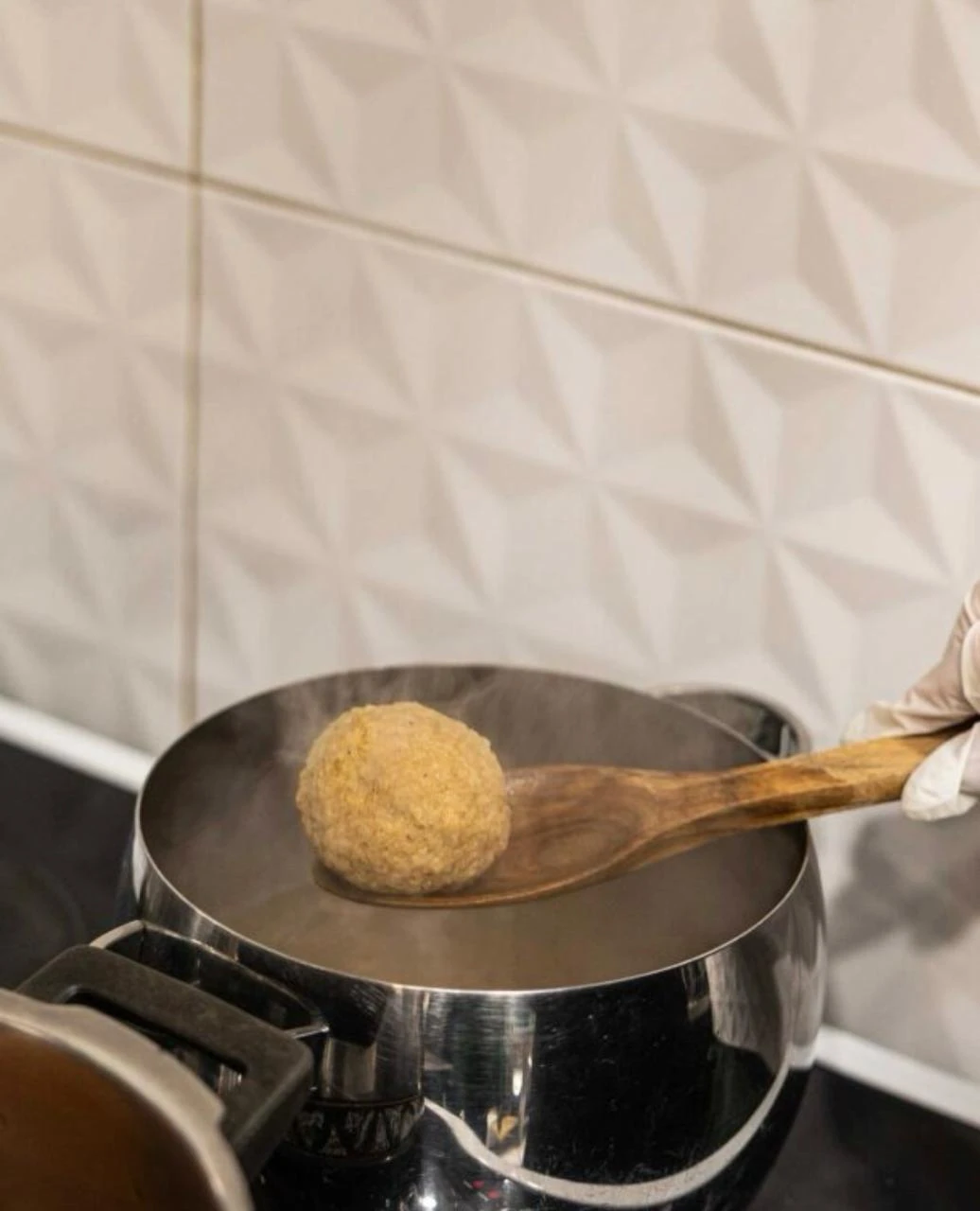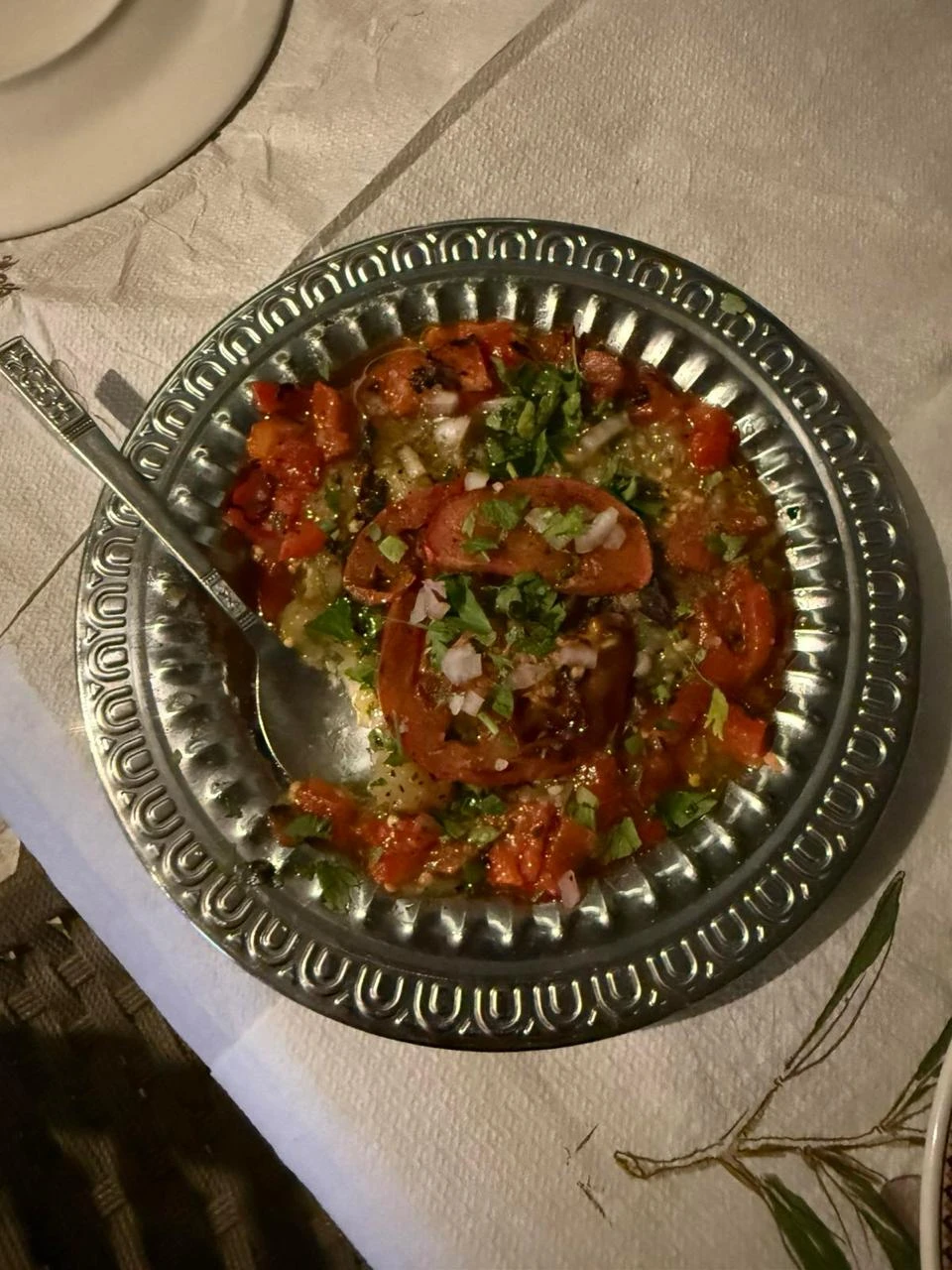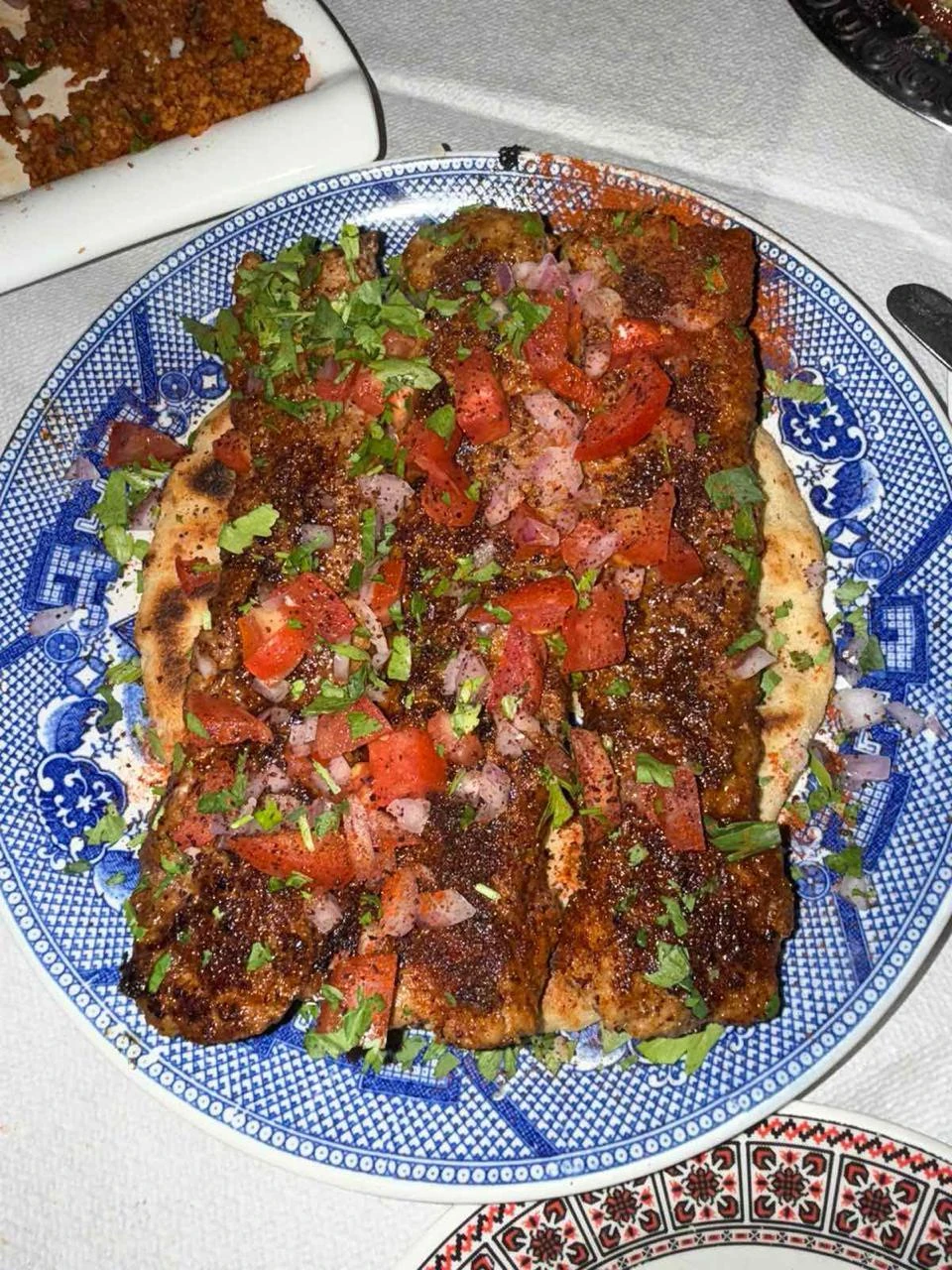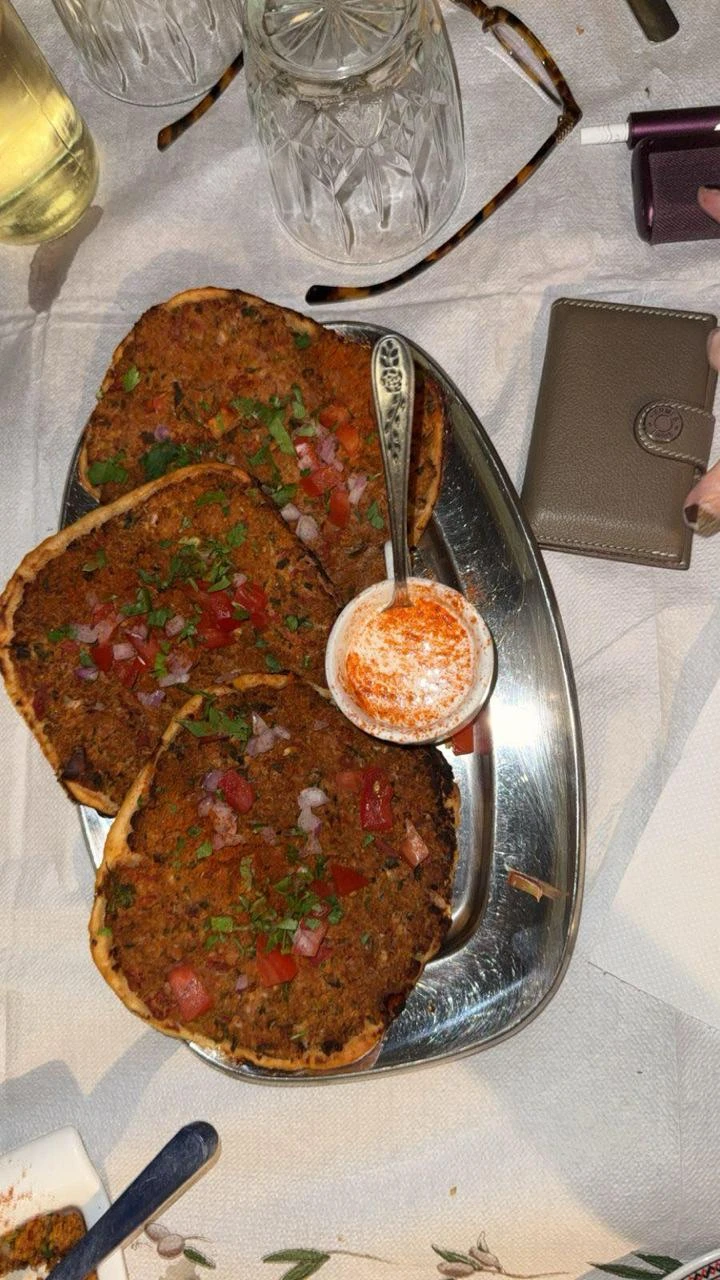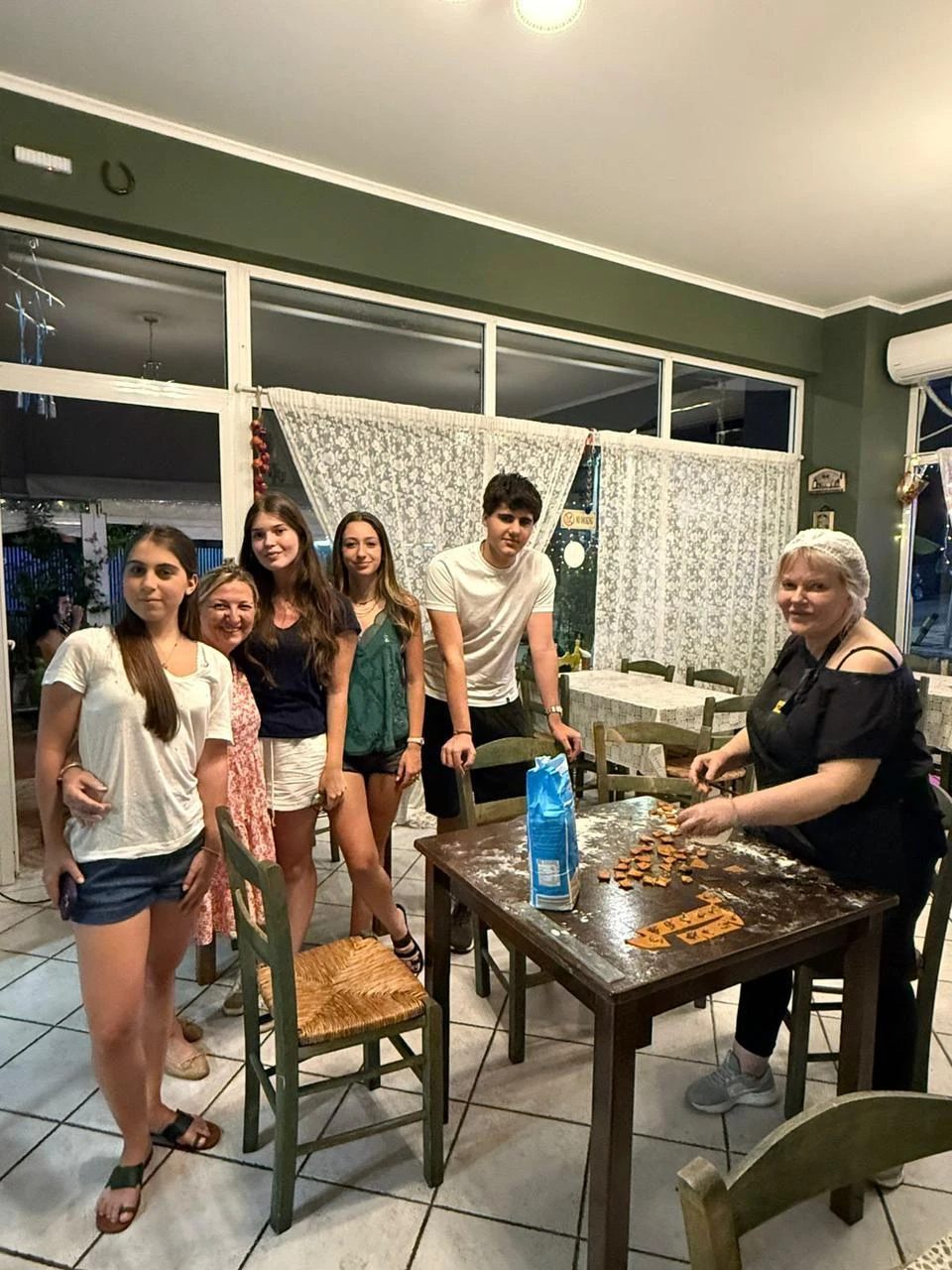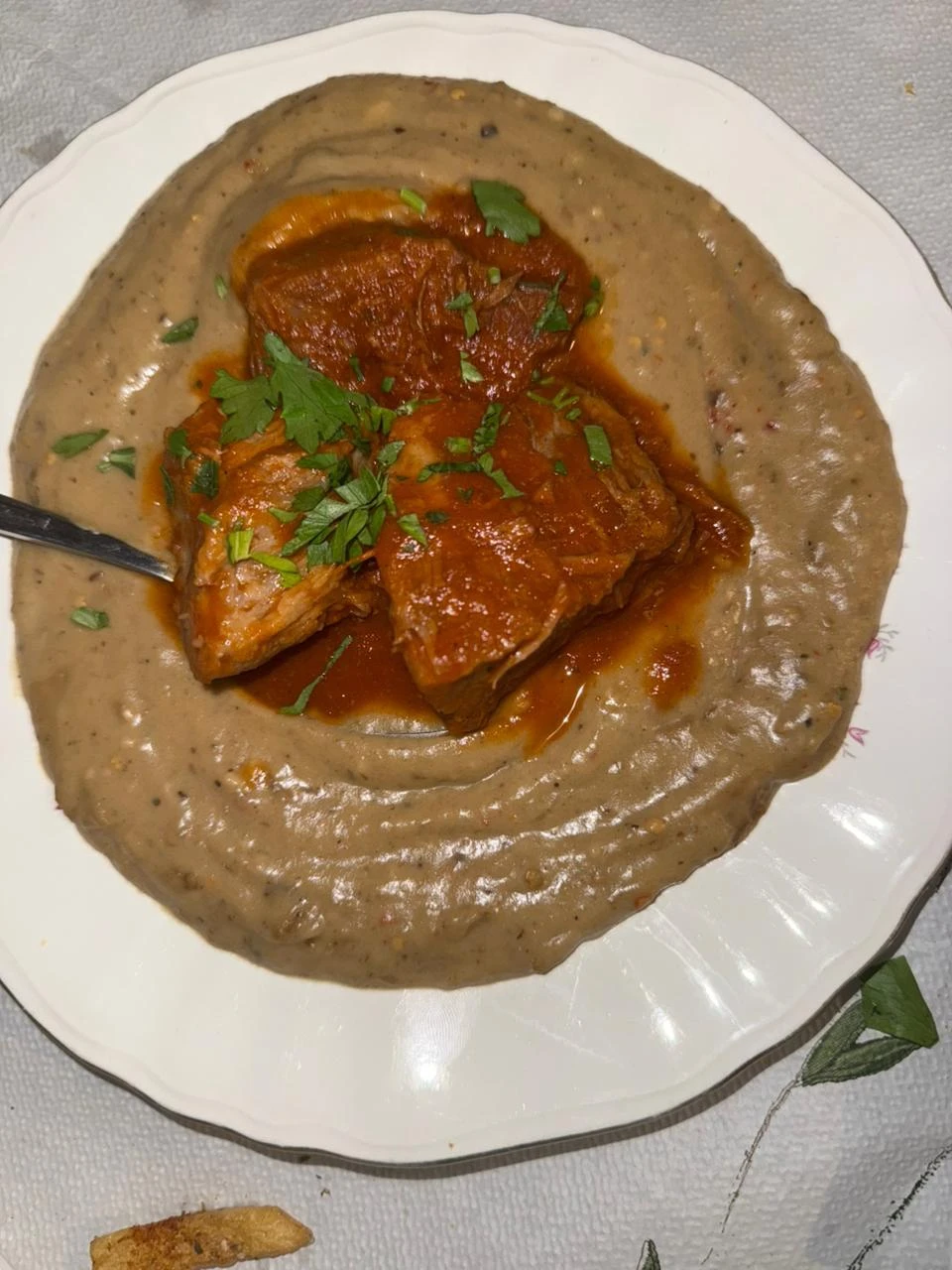Boghossian Interview
Published on August, 2025
Last weekend we decided to visit one of the most famous Armenian restaurants in Athens, Izabela-Armenian Delicacies. We were really looking forward to this visit because every time we taste dishes from the Armenian cuisine we feel a strong connection to our roots. Traditional food reflects the history of a nation; it awakens memories and emotions and connects different generations.
When we arrived at the restaurant, we immediately felt at home, not only because of Izabela’s warm welcome but also because of the atmosphere and décor which beautifully reflected the Armenian culture. Every detail seemed carefully chosen in order to provide customers with an authentic Armenian dining experience. The tablecloths were traditional needlework pieces and the walls were decorated with family heirlooms that were preserved through the years. It really felt like home and we couldn’t wait to taste the delicious dishes on the menu.
While we were waiting for the food to be served, Izabela kindly invited us into the kitchen to show us how some of the menu’s signature dishes were prepared, such as sulu manti, icli kofte and khorovats. This was definitely the most unforgettable part of our visit, as we watched the chef bring the recipes to life and smelled all these distinctive aromas and spices that reminded us of our precious heritage.
Tasting the food was equally memorable, as each dish was so rich in flavor and culture that it felt like traveling back in time. We realized that every dish carried a story beyond its traditional ingredients. We felt deeply connected to our past and we will forever be grateful to Izabela for this beautiful experience.
After finishing our dinner, we kindly asked Izabela to share some stories about her life journey and her Armenian roots. Ηer food had already warmed our hearts, and her personal story did just the same.
Could you share a bit about your family’s history and your connection to Armenia?
My ancestors were wealthy people from the village of Sis, in Western Armenia. Back then, Armenia was so big that it stretched all the way to the coast of Asia Minor. Today, Sis belongs to Turkey, just like Cilicia, Erzurum, Van and other cities.
My grandfather, Assilian Bedros, was a cobbler. As I mentioned, my family was well-off and highly respected by everyone in Sis. They lived with dignity and had great relationships with their neighbors. At some point, the Turkish people started feeling jealous of the progress and prosperity of the Armenian and Greek populations, so they decided to deport them using violent and inhumane means. Fortunately, my grandparents had some Greek friends who helped them escape to Smyrna. From there, they traveled with caravans to Syria. My grandfather’s two siblings stayed there and hid in the desert, while my grandparents went to Cyprus, where they lived for six months, before finally settling on the Greek island of Chios. Life was an uphill struggle for them until they arrived in Piraeus.
By the time my grandparents settled there, they had already got married and they were quite determined to survive and build a new life. It is widely known that many Armenians who came to Greece after the genocide created small communities in places like Kokkinia, Dourgouti and Drapetsona. They literally lived in tin shacks that leaked when it rained. But still, they had such pride that they never begged for anything. Imagine that even when they had no food, they would fill pots with water and pretend to cook, just so their neighbors would think they were making food.
Over time, they managed to create churches, schools and Armenian cultural clubs. My grandpa opened a cobbler’s shop on Mavromichali street, just under the Acropolis. He was the wise man of the community that everyone respected and turned to for advice. I feel extremely proud of him because even after all these years everyone remembers him. I was even honored to accept an award that the community created in his memory. I feel incredibly lucky to have been raised in such a family. They might have had very little, but they always lived with dignity.
My beloved mother, Anahit Assilian, was just as strong and loving as they were. When she was just eight years old, she was shot by a German soldier, while playing in the square. The bullet hit four kids; two of them died and my mother was wounded in her arm. However, no one truly noticed her suffering, as she was too proud to let it show. She raised me making sure I was never deprived of anything, just like her parents did for her.
How did your journey with cooking begin?
Growing up, I wasn’t really interested in cooking. I started getting involved with it when I joined the women’s club of the local community, where we prepared traditional Armenian dishes for several events and celebrations. That is when I realized how much I enjoyed cooking, especially for other people.
What inspired you to open an Armenian restaurant?
At first, my husband Stelios and I owned a souvlaki restaurant in Renti, but due to the economic crisis in Greece, things didn’t go as we had hoped. We were really struggling at the time and we felt uncertain about the future. One day, a friend of mine tasted some of my lahmajoun—an Armenian dish that I had made with my friends from the women’s club — and she was so amazed by it that she insisted I open an Armenian restaurant. She planted the idea in my head and the rest is history.
Is there a piece of décor in your restaurant that holds a sentimental value for you, and why?
The most precious object in the restaurant is the Αsdvatsashounch, which is the Armenian Gospel Book. I keep it in a beautiful case at the entrance of the restaurant. When my ancestors came to Greece, they had nothing with them—just a few clothes and some tools for my grandfather’s work. Over the years, all those items were lost, so I keep this book as a sacred, lucky charm. Armenians have always drawn strength from their faith. We were the first nation to adopt Christianity in 301 AD and we paid for it. That’s why I treasure the Holy Book so deeply. It’s the most sacred heirloom that connects me to my ancestors and whenever I face difficulties I always get down on my knees, pray, and gain strength from it.
Do you have a favorite dish on the menu, and why is it special for you?
One of my absolute favorites is sulu manti, a soup made with beef-stuffed dumplings simmered in a broth of tomato, spearmint and lemon. On cold winter nights, my grandma Zepour would cook manti to keep us warm, while telling us stories about our nation’s history. I cherish these precious moments and I try to pass them on to my son, Agop, because this is our history and it runs in our blood. Another dish I love is jidabour, which is now known as harissa. It’s made by slowly cooking beef and wheat together and stirring the mixture until it turns into a creamy porridge. Traditionally, Armenians would boil the meat and wheat overnight and serve it in celebrations or times of mourning. This year, I’ve included this dish in my restaurant’s menu under the name “Soul’s Remedy”, because its taste has a soothing effect in your soul. It might be a bit fussy to prepare, but it’s definitely worth the effort.
What dreams do you have for the future of your restaurant?
I really hope my son will take over the business one day and of course, my husband and I will always be there to support and guide him in any way he needs.

